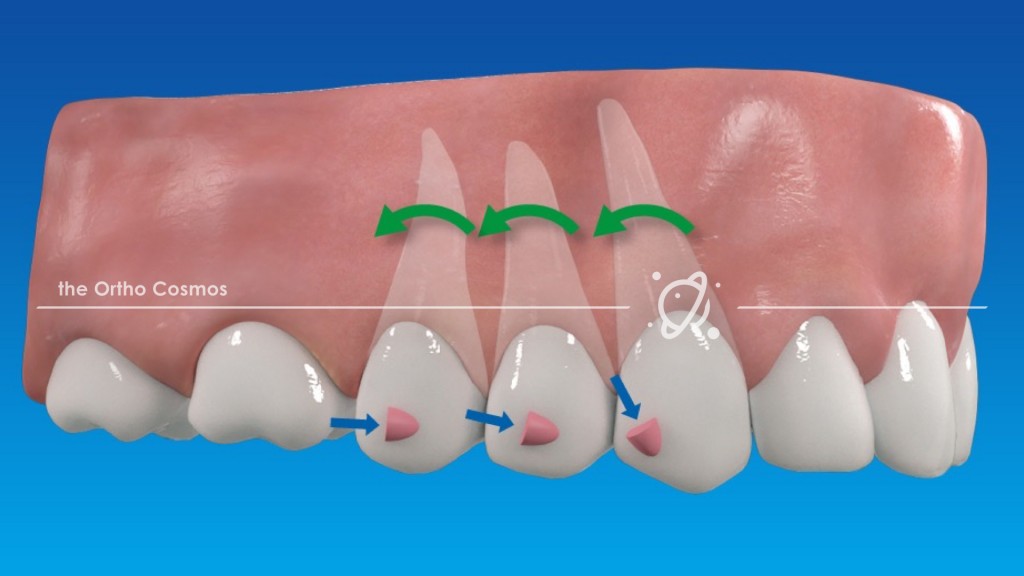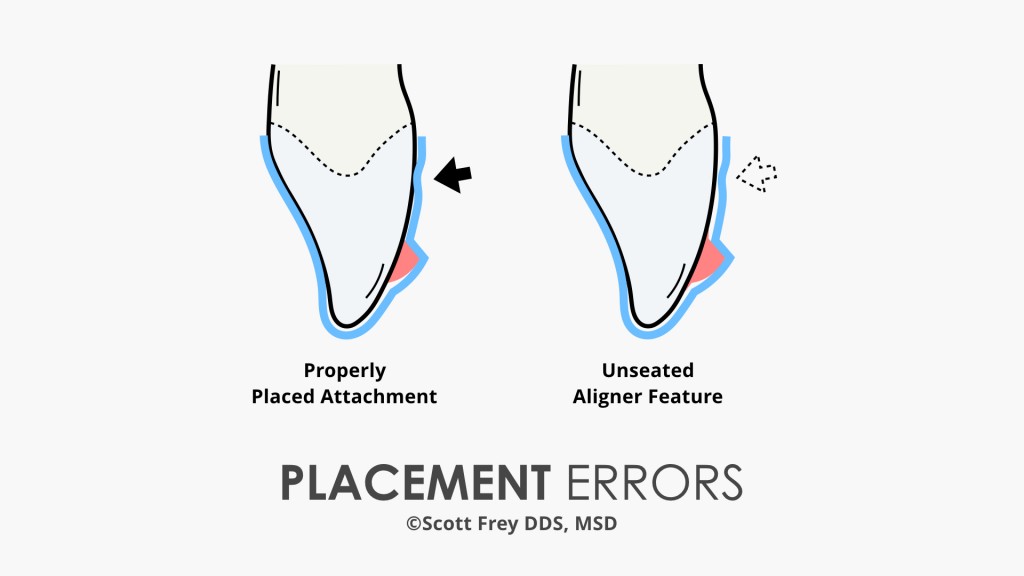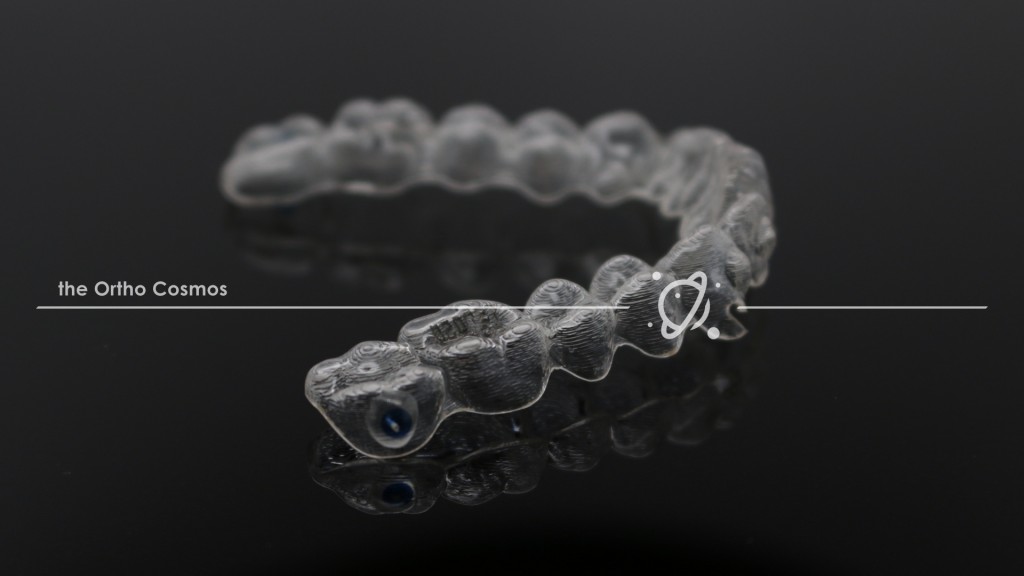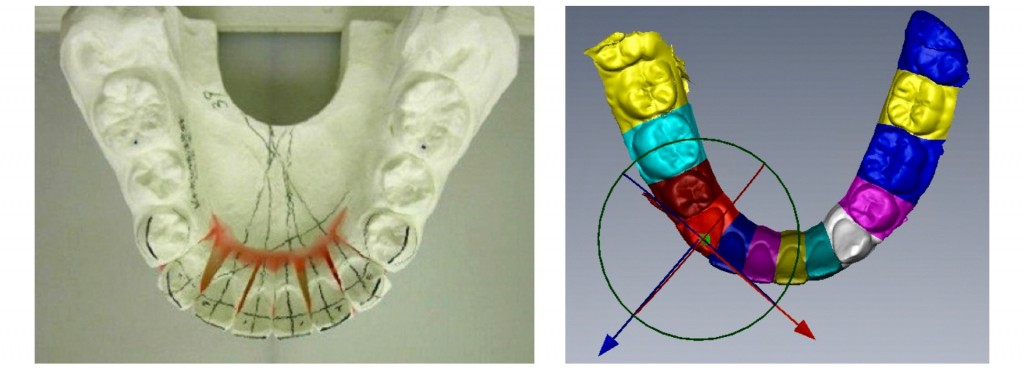 Common Sense Invisalign Mechanics
Common Sense Invisalign Mechanics
I always get a good chuckle when I hear ‘flat-earthers’ proclaim things like “optimized attachments don’t work.” This position is anti-science, and ironically sounds a lot like the now completely debunked claim that “Invisalign doesn’t work.”
The old mindset of Invisalign treatment was to deliver the desired forces by modifying the shape of teeth with attachments, creating nothing more than a crude handle to push on. The solution then to any bio-mechanical problem was to add more attachments and/or bigger attachments based on a visual inspection of the apparent force vectors. However, it should be common knowledge to any trained orthodontist that a visual method of determining forces, while seemingly obvious, leads to faulty conclusions and frustration. Unfortunately, many people still approach Invisalign bio-mechanics in this way.
Data-Driven Force Systems
Invisalign’ s optimized attachments and optimized force systems, like SmartStage, do not function in nearly the same manner as traditional attachments. Instead of just a handle, Invisalign’s optimized element use unique aligner-forming features and pre-activated attachments to deliver custom force systems based on individually prescribed tooth movements. As a result, smaller attachments can be utilized and less teeth require attachments. This technology would not be possible without Align’s extensive treatment databases, which allow for aligner bio-mechanics to be better examined on a massive scale and without visual bias.
Data-driven force systems, developed by data analysis of thousands of cases using well controlled selection criteria, will always trump the arbitrary conclusions made by any one person and the comparatively small sample size they have to draw on. If you use Google as your search engine, you already know that big data makes all the difference.
As a speaker for Invisalign, it would be convenient for me to turn attachment selection into a mysterious process where I alone am in possession of “secret knowledge” that has been denied to everyone else, but that is not how science works. Continuing to promote the use of traditional attachments when an optimized solution exists is simply not science based, and advocating the use of an inferior clear aligner product.
Orthodontists’ personal struggles with optimized attachments are simply the result of inadequate clinical systems for attachment placement and a failure to seat key aligner forming features during treatment. This seems to occur regardless of experience level.
Without consistent seating of aligner features throughout treatment the optimized attachments cannot not deliver the prescribed forces. You can see what I am talking about with regards to poor placement in the diagram below.
The Importance of a Skilled Orthodontist
With Invisalign’s algorithms helping orthodontists to provide more efficient force application, we are freer to design better smiles and better bites for our patients. It still takes a significant amount of input from a skilled orthodontist to properly plan optimal movements and the final alignment if you are going to deliver the best outcomes for your patients. However, when it comes to attachment planning, our role is now to audible between optimized approaches rather than being forced to design attachments from the ground up.


 The placement of teeth on the CAD software does not guarantee that the actual teeth will respond into that desired outcome. This is where the best practices of tooth movement come into play. An experienced orthodontist will modify the movements that are drafted to maximize the predictability of the final result, plus maintain a healthy outcome. This is where the skill of the doctor determines the success of the patient’s treatment. The staging of the movement, the speed, direction and supporting attachments are the true secrets to success. A proper treatment plan is the critical component.
The placement of teeth on the CAD software does not guarantee that the actual teeth will respond into that desired outcome. This is where the best practices of tooth movement come into play. An experienced orthodontist will modify the movements that are drafted to maximize the predictability of the final result, plus maintain a healthy outcome. This is where the skill of the doctor determines the success of the patient’s treatment. The staging of the movement, the speed, direction and supporting attachments are the true secrets to success. A proper treatment plan is the critical component. Clear aligner therapy started with sectioning plaster casts and manually placing teeth into position. Some aligner systems still use a digital version of the same technique. The most versatile clear aligner products offer more effective tools in the diagnosis and design of the treatment. These allow the doctor to better control the movements and represent the desired forces into the aligners worn by the patient. The better the software is in designing the treatment, the better the aligner system. The better the available force systems to move teeth, the better the aligner system. And the better the transfer of digital data into the fabrication of the plastic aligner, the better the aligner system. Even rudimentary clear aligner systems can treat simple crowding issues. Only the best clear aligner systems combined with an experienced doctor can achieve the best results treating a full range of simple to complex malocclusions.
Clear aligner therapy started with sectioning plaster casts and manually placing teeth into position. Some aligner systems still use a digital version of the same technique. The most versatile clear aligner products offer more effective tools in the diagnosis and design of the treatment. These allow the doctor to better control the movements and represent the desired forces into the aligners worn by the patient. The better the software is in designing the treatment, the better the aligner system. The better the available force systems to move teeth, the better the aligner system. And the better the transfer of digital data into the fabrication of the plastic aligner, the better the aligner system. Even rudimentary clear aligner systems can treat simple crowding issues. Only the best clear aligner systems combined with an experienced doctor can achieve the best results treating a full range of simple to complex malocclusions.